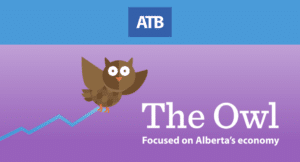Todd Hirsh of ATB Economics and Frances Donald of Manulife Investment Management recently had a podcast where they came up with, what they think, are the top 5 economic stories to watch in 2022. These were the points as written in Todd Hirch’s blog: ‘The Owl’ from January 20th and January 21st, 2022:
#1: COVID-19
The first story is how the Omicron variant and the pandemic will impact the global and Canadian economies as we get deeper into 2022. From an economic point of view, Omicron may have less of an impact than earlier strains, but we will have to wait and see.
#2: Global supply chains
Another big economic story will be when, and how, global supply chains are repaired. In addition to a tragic health crisis, the pandemic has also wreaked havoc on the movement of goods around the world. The “just-in-time” approach has left many businesses and consumers without access to the inputs and goods they need. While we expect things to improve in 2022, it may be a slow return to normal for the transportation and logistics industry.
#3. The changing nature of the US labour market
While not as acute in Canada (yet), the job market south of the border is heating up. High unemployment early in the pandemic has rapidly given way to labour shortages, leaving many employers scrambling to find workers. As a result, wage pressures are building and adding to the high rates of inflation. The way workers think about their jobs and careers also appears to be changing with greater emphasis being placed on job satisfaction.
#4. Central banks taking action
With price pressures rising throughout the global economy (see #5 below), central banks will be pressed to start raising interest rates. The challenge they will encounter, however, is one of timing. It’s always a delicate balance for monetary policy: when to raise interest rates to calm inflation without acting too quickly and unintentionally pushing the economy back into recession.
The COVID-induced recession in 2020 and bounce back in 2021 were unique in many ways, and traditional central bank actions may not be as effective this time around. Still, central banks are under increasing pressure to do something. The actions they take in 2022, and the effectiveness of these actions, will be watched by economists and consumers alike.
#5. Inflation
Rounding out the top five economic stories to watch this year is a phenomenon related to all four of the other stories on our list: inflation. As measured by the Consumer Price Index, monthly inflation in Canada hit a 30-year high when it climbed to 4.8% at the end of the year. In the US, inflation hit 7% in December, the highest it’s been since 1982.
But the current bout of inflation is unique in many ways. It’s not just the demand-push inflation that results from “too much money chasing too few goods” (the kind of inflation for which monetary policy is relatively well-equipped). It’s more a matter of cost-push inflation driven by impaired supply chains, crop failures due to drought, spiking energy costs and rising worker wages. Will inflation be “transitory” and work itself out in 2022? Or are we on the path to years of rising inflation like we saw in the 1970s and 1980s? Time will tell.
Written by Todd Hirsh at ATB Economics





